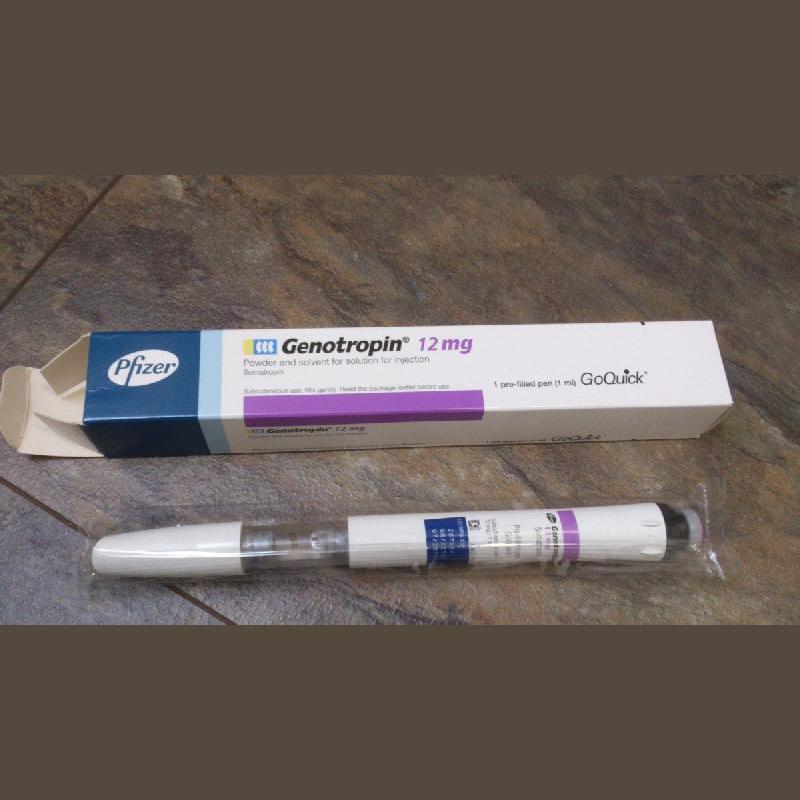Introduction

Somatropin, a synthetic form of human growth hormone (HGH), is widely used for various medical and cosmetic purposes. Approved for treating growth hormone deficiency, Turner syndrome, chronic kidney disease, and other conditions, somatropin is also used off-label for anti-aging, muscle building, and athletic performance. However, beyond its medical benefits and therapeutic value, somatropin raises significant financial concerns. Understanding the somatropin cost, including factors influencing pricing, insurance coverage, and long-term affordability, is crucial for anyone considering this treatment.
What is Somatropin?
Somatropin is a recombinant human growth hormone (rhGH) that mimics the natural growth hormone produced by the pituitary gland. It is administered via injection and is available under various brand names such as Genotropin, Norditropin, Humatrope, and Saizen. It is prescribed to children and adults whose bodies do not produce enough growth hormone naturally. In adults, somatropin may also be prescribed for hormone replacement, muscle wasting related to HIV/AIDS, or in conjunction with fertility treatments.
Understanding Somatropin Cost
Average Price Range
The somatropin cost can vary significantly depending on the brand, dosage, frequency of use, and the country in which it is purchased. In the United States, the price for somatropin can range between $600 to $1,500 per month for a moderate dosage. For higher doses or longer durations, this cost can easily rise above $3,000 per month. A full-year treatment can therefore range from $7,000 to over $36,000, depending on the specific treatment plan.
Factors Influencing Cost
Several factors affect the cost of somatropin therapy:
- Dosage Requirements: Higher doses are naturally more expensive. The dosage is determined by factors such as age, weight, diagnosis, and treatment goals.
- Brand Name vs. Generic: Some brands are more expensive due to marketing, reputation, and proprietary delivery devices. Generic versions, where available, may be slightly less costly.
- Formulation and Delivery: Some products come with specialized pens or pre-filled syringes, which add convenience but also increase the price.
- Geographic Location: Prices may vary across countries due to regulatory factors, insurance coverage, and availability. In countries with nationalized healthcare, the cost may be significantly lower.
- Treatment Duration: Long-term use significantly increases total cost. Pediatric patients might require therapy for several years.
- Provider and Pharmacy: Specialty pharmacies often offer better rates than retail pharmacies, but not always. Some providers may also charge additional fees for administration or consultations.
Insurance Coverage and Reimbursement
Private Insurance
Many private insurance plans offer partial or full coverage for somatropin, but only when it is deemed medically necessary. This typically includes conditions like growth hormone deficiency, Turner syndrome, or chronic kidney failure. Documentation, medical history, and physician justification are usually required. Even with insurance, patients might face co-pays ranging from 10% to 30% of the total cost.
Medicare and Medicaid
Coverage under Medicare or Medicaid is more restricted. These programs might cover somatropin when it’s essential for a life-threatening condition or severe hormonal deficiency. The process for approval is more rigorous, and out-of-pocket expenses can still be substantial.
Out-of-Pocket Scenarios
When used for off-label purposes such as anti-aging or athletic enhancement, somatropin is usually not covered by insurance. In such cases, patients must bear the full cost of the treatment. This is often the case with clinics offering “wellness” or “age management” programs.
Financial Assistance Programs
Due to the high cost of treatment, many pharmaceutical companies offer patient assistance programs to eligible individuals. These programs can provide free or discounted medication for low-income patients or those without insurance. Common programs include:
- Pfizer Bridge Program for Genotropin
- Norditropin Patient Support Program
- Humatrope CARE Assist
Patients can also explore coupon cards, co-pay assistance, and non-profit organizations that support access to medication. Some healthcare providers may assist with enrollment in these programs.
Long-Term Financial Considerations
Pediatric Use
Children who require somatropin may need it for several years, making it a significant long-term investment. The total cost over a 10-year treatment period could exceed $100,000 to $200,000, depending on insurance and dosage. Families must plan for consistent out-of-pocket expenses or seek long-term financial assistance.
Adult Use
Adults using somatropin for approved medical reasons usually need a lower dosage than children but may still require long-term therapy. Even at reduced dosages, the annual cost can range from $10,000 to $20,000. For those using somatropin off-label, this cost is entirely out-of-pocket.
Hidden Costs
In addition to the medication itself, there are several indirect or hidden costs:
- Diagnostic Testing: Blood tests and imaging to assess hormone levels and monitor treatment can cost hundreds to thousands annually.
- Doctor Visits: Regular endocrinologist or specialist visits add to the financial burden.
- Injection Supplies: Alcohol swabs, needles, sharps containers, and replacement pens all add to recurring expenses.
- Travel and Time: Visiting specialists or treatment centers may involve additional travel or time off work.
Cost-Saving Tips
Patients considering somatropin should take proactive steps to minimize financial strain:
- Compare Pharmacies: Prices can vary drastically between pharmacies. Use tools like GoodRx to compare prices.
- Buy in Bulk: Some pharmacies offer discounts for purchasing a 90-day supply instead of 30 days.
- Negotiate: Some clinics and providers may offer payment plans or discounts for upfront payment.
- Check Expiration Dates: When buying larger quantities, ensure the medication will not expire before use.
- Explore Clinical Trials: Some patients may qualify for free treatment by enrolling in a clinical trial.
Conclusion
Somatropin offers significant benefits for patients with growth hormone deficiencies and other related conditions, but the financial commitment should not be underestimated. The somatropin cost varies based on dosage, brand, insurance coverage, and treatment goals. Understanding these variables can help patients make informed decisions about starting and maintaining treatment. Whether covered by insurance or paid entirely out-of-pocket, the economic burden can be high, especially for long-term users. Accessing patient assistance programs, comparing prices, and planning ahead are all essential steps in managing the financial aspects of somatropin therapy.




